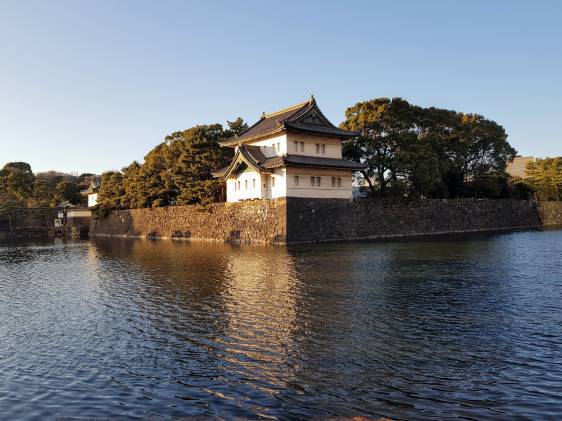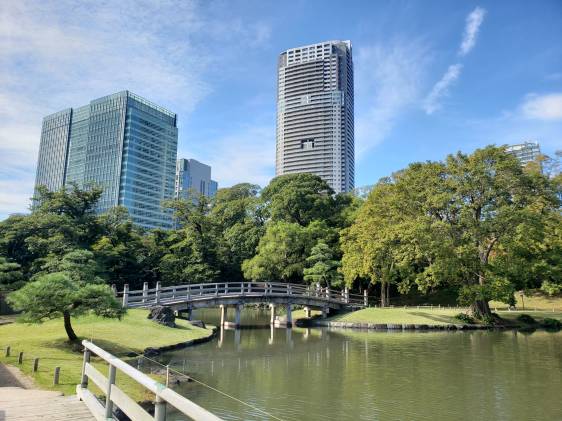One important thing to know about cherry blossoms is that there are several kinds. According to the official forecasts, cherry blossom season is quite short — from late March to early April. But that’s just the Somei-yoshino variety. Mid-April onwards is when the late-blooming cherry trees, or yaezakura, put on their show in Tokyo.
Yaezakura, which means “multi-layered cherry blossom,” is a catch-all term for cherry blossoms with more than five petals. Starting to bloom in mid- to late April, yaezakura range from light to dark pink in color. Here’s where to see some of the most beautiful yaezakura in Tokyo.

8 places to see late-blooming cherry trees in Tokyo
Here are some top spots in Tokyo where you can see yaezakura. Since the blooming of yaezakura isn’t as celebrated as that of the Somei-yoshino variety, don’t expect anything like festivals. Hanami parties for yaezakura aren’t common, either. But hey, they’re still cherry blossoms — so go for a stroll and admire them!
1. Asukayama Park
Free5-minute walk from Ōji Station
More than 150 late cherry blossom trees

Asukayama Park may be known more for its Somei-yoshino trees, but look out for their yaezakura as well. These start blooming about a week after the cherry blossoms reach full bloom each year. They’ve got about 180 yaezakura trees in the park.
2. Imperial Palace East Gardens
Free10-minute walk from Tokyo Station
Combine history with late-blooming cherry blossoms

Aside from having Somei-yoshino, the vast Imperial Palace East Gardens is also known for the kanzan variety of yaezakura. And not far from the gardens is Kōkyo Gaien National Garden, which also has around 20 ichiyō late cherry trees with benches underneath the blossoms. Both should be in full bloom by mid-April.
3. Shinjuku Gyoen National Garden
¥5002-minute walk from Shinjuku-gyoemmae Station
For all your cherry blossom needs
With close to 70 kinds of cherry blossoms and about 1100 cherry trees in total, Shinjuku Gyoen National Garden is one of Tokyo’s most famous hanami spots. Included in the mix are around 20 varieties of yaezakura. There are approximately 200 trees with ichiyō blossoms in the English Landscape Garden — start there and work your way around the rest of the park.
Students: ¥250
Seniors: ¥250
4. Hamarikyū Gardens
¥3007-minute walk from Shiodome Station
Peaceful retreat
This quiet garden is a breath of fresh air in Shiodome, primarily a business district. A cool feature of Hamarikyu is its teahouse overlooking a pond, where you can see some late-blooming sakura reflected in the surface. There aren’t many, but the yaezakura on display also include an unusual green type.
5. Ueno Park
Free5-minute walk from Ueno Station
Plenty of space for late-blooming sakura

You can count on Ueno Park to have different kinds of cherry trees — it’s not one of Tokyo’s most popular hanami spots for nothing! Ichiyō and kanzan are just some of the yaezakura varieties that you can see here.
6. Chidorigafuchi Moat
Free13-minute walk from Kudanshita Station
A stroll by a moat with swan boats
While its cherry blossom festival will be over by the time the yaezakura bloom, Chidorigafuchi has a few late-blooming cherry blossom varieties among its 170 trees. You can enjoy a quiet, peaceful stroll along the Imperial Palace moat.
7. Sakurashinmachi
Free1-minute walk from Sakura-Shinmachi Station
Neighborhood with a row of late-blooming cherry blossoms
As the name implies, this shotengai (shopping street) in Setagaya is lined with cherry trees. There are about 200 mom-and-pop shops here — you can admire the cherry blossoms while taking a break from shopping.
8. Kinuta Park
Free20-minute walk from Yōga Station
Bring your picnic blanket
If Sakurashinmachi appeals to you, you might as well combine it with a visit to the relatively nearby Kinuta Park. This place doesn’t really do public transport, so it’s either a 20-minute walk to the northwest of Yōga Station, or a 30-minute walk to the west of Sakurashinmachi. Despite being a little out of the way, it’s a popular hanami spot that is famed for its late-blooming yaezakura.
9. Jindai Botanical Gardens
¥50021-minute bus ride from Mitaka Station
Examine late-blooming blossoms up close

Although Jindai Botanical Gardens is most famous for its chrysanthemum show, it is also a great spot for cherry blossom viewing. With over 600 cherry trees of various varieties, it’s no surprise that the gardens feature many late-blooming blossoms, such as satozakura. The gardens also host an annual cherry blossom festival from late March to early April if you happen to be in Tokyo for the earlier blooming sakura.
10. Koganei Park
Free7-minute bus ride from Higashikoganei Station
Near to Edo-Tokyo Open-Air Architectural Museum
For two days in March, this park hosts the Koganei Cherry Blossom Festival, known for its traditional performances set against the backdrop of sakura. Even after the festival, you can still enjoy the sight of late-blooming blossoms like satozakura, kanzan, and fugenzo.
Common types of yaezakura cherry blossoms
Count the petals and try to identify these different trees around Tokyo.
- Kanzan: A common type of yaezakura, which has anywhere from 30 to 50 dark pink petals.
- Ichiyō: Another common yaezakura, with about 20 light pink petals on each blossom.
- Fugenzō: The oldest variety, with petal colors ranging from white to dark pink.
- Shogetsu: Typically has 20–30 white petals.
- Kikuzakura: Literally “chrysanthemum cherry blossom,” these can have up to 100 petals (which are light pink and not yellow like a chrysanthemum’s).
- Yaebenishidare: A type of weeping cherry tree that has 15 to 20 petals.
Fun fact: Yaezakura sometimes resemble peonies, so some people also call them botan-zakura, botan being the Japanese word for peony.
While we do our best to ensure it’s correct, information is subject to change. Post first published in March 2015. Last updated by Jane Pipkin in February 2025.






































